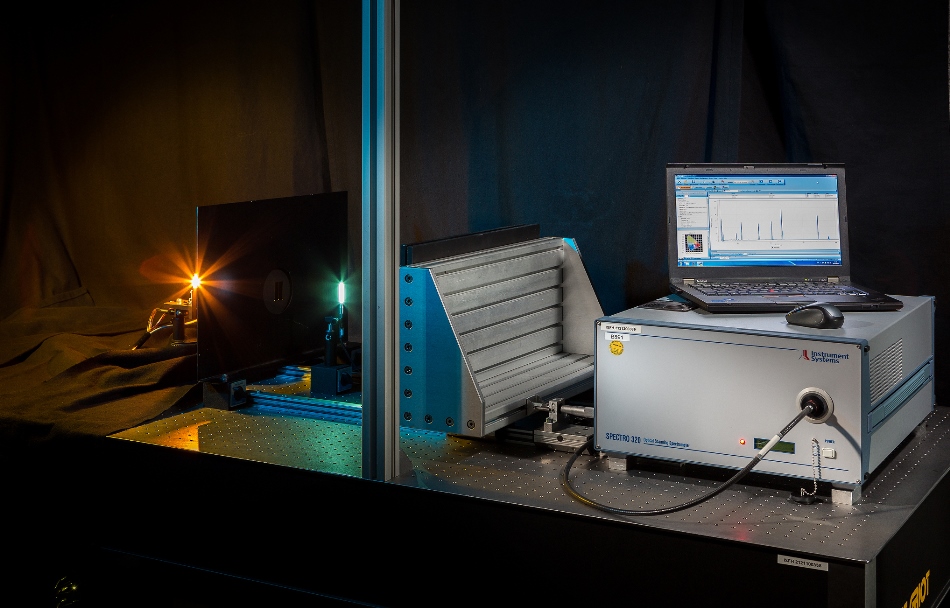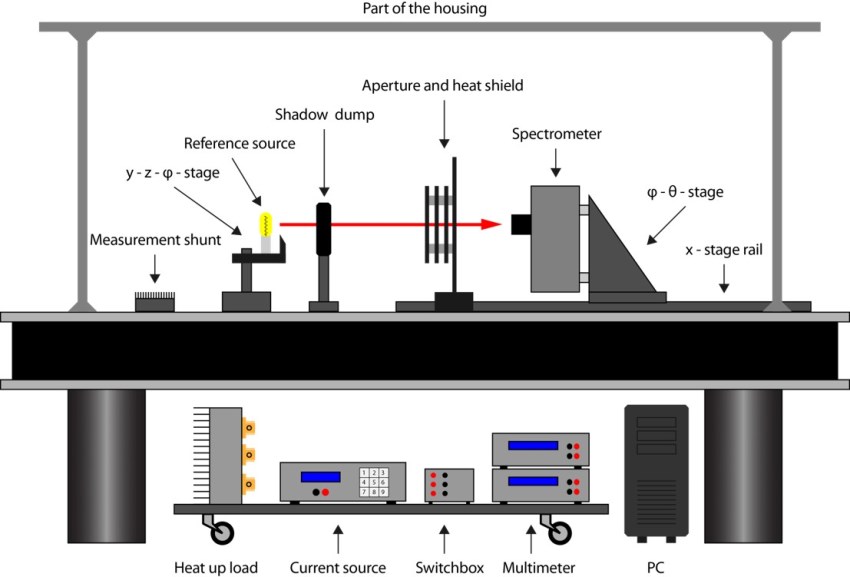ISFH CalTeC – sensors
Contact
Dr. Karsten Bothe
Tel.: +49(0)5151-999 425
E-Mail: sensors@caltec.isfh.de
Downloads:
Testing of spectroradiometers
The ISFH CalTeC (Calibration and Test Center) is accredited by the German Accreditation Body (DAkkS) under the registration number D-PL-18657-01-00 for the testing of spectroradiometers regarding the correct determination of spectral irradiance and wavelength in the spectral range from 250 nm to 1700 nm. The DAkkS accreditation confirms that the ISFH CalTeC fulfils all requirements of DIN EN ISO/IEC 17025 for the operation of calibration and test laboratories. Our testing procedure is based on the recommendations of the International Commission on Illumination (CIE – Comission Internationale de l’Eclairage) published in The spectroradiometric measurement of light sources (CIE No 63 (1984)). For the tests, we use reference lamps whose spectral irradiance is traceable to transfer standards calibrated by Germany’s national metrology institute, the Physikalisch Technische Bundesanstalt (PTB).
The measurement of the spectral irradiance requires a spectroradiometer. This is a spectrometer which is calibrated with respect to wavelength and spectral irradiance. Usually, spectrometers are delivered ex works only with a wavelength calibration. For this calibration, narrowband emission lines of known wavelengths are measured and the values in between are interpolated. The spectrum of a radiator measured with a spectrometer calibrated in this way does not reflect the spectral irradiance of the light source under test, since all optical components along the beam path (such as mirrors, filters and diffraction gratings) and the detector react differently to different parts of the spectrum and thus influence the measurement result. In order to counter this problem, a transfer function is required which converts the arbitrary intensity scale of the detector into a spectral irradiance scale. The determination of this transfer function and the subsequent testing of the spectroradiometer takes place in three steps.
In the first step, we measure the known spectral irradiance of a 250 W reference lamp at a distance of 300 mm in digital units (counts) of the detector. The irradiance of the tungsten halogen lamps used is known for wavelengths between 300 nm and 2500 nm.
In the second step, we calculate the transfer function from the comparison of the target spectrum of the reference lamp and the actual spectrum measured in the first step. The transfer function enables the conversion of the detector signal (in units of counts) into spectral irradiance (in units of W/(m2 nm)).
In the third step, we repeat step 1 and check the correct determination of the spectral irradiance of a reference lamp. The result of this test is documented in a DAkkS test certificate.
Publications
Calibrating spectrometers for measurements of the spectral irradiance caused by solar radiation
Paper: Metrologia 57 (6), 065027, (2020) – open access
Source code:Monte carlo uncertainty analysis for spectral irradiance measurements (Version 2020-08; License CC BY 4.0)
Implementation and uncertainty evaluation of spectral stray light correction by Zong’s method
Applied Optics 58 (36), 9998, (2019) – open access


